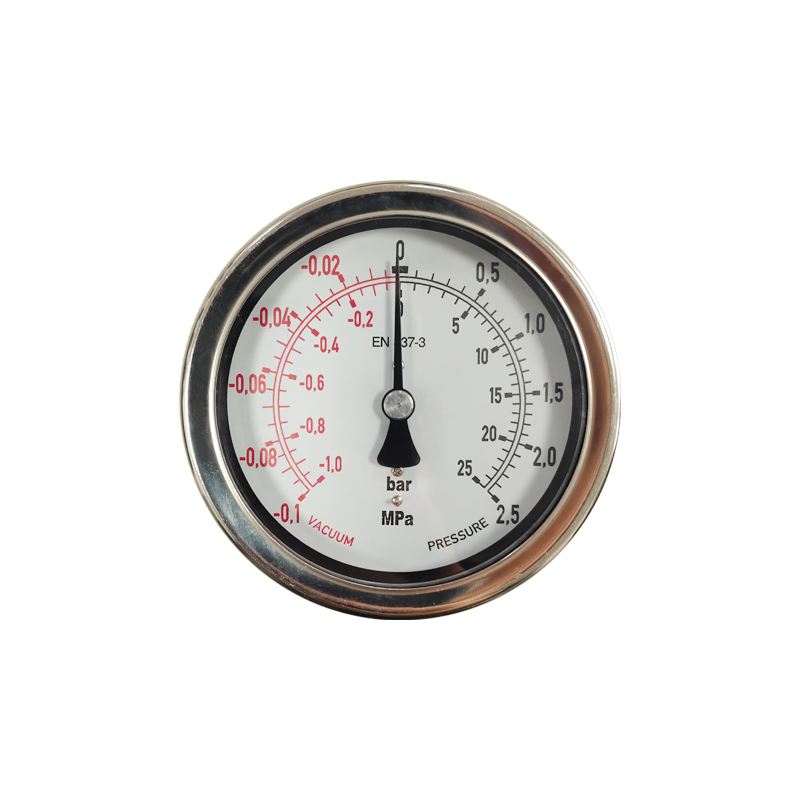
10月 . 10, 2024 22:28 Back to list
low range differential pressure gauge service
Understanding Low Range Differential Pressure Gauges and Their Service
Differential pressure gauges are essential instruments in various industries for monitoring pressure differences between two points. Low range differential pressure gauges are specifically designed to measure small pressure variations, typically in the range of a few inches of water column. These instruments play a crucial role in processes where minor changes in pressure can significantly impact operational efficiency and safety. This article will delve into the functionality, applications, and servicing of low range differential pressure gauges.
Functionality of Low Range Differential Pressure Gauges
Low range differential pressure gauges operate on the principle of measuring the pressure difference between two reference points. The basic construction involves a sensing element, usually a diaphragm or a Bourdon tube, which deforms in response to pressure changes. This deformation is then converted into a readable output, often displayed on a dial or a digital readout. The accuracy and sensitivity of these gauges make them ideal for applications where precise measurements are critical.
These instruments are commonly calibrated to read in inches of water column (in WC) or millibars (mbar), depending on the specific application. They provide real-time data to operators, allowing for immediate assessment and response to changes in the process environment.
Applications of Low Range Differential Pressure Gauges
Low range differential pressure gauges are utilized in various industries, including HVAC systems, pharmaceuticals, food and beverage production, and environmental monitoring.
1. HVAC Systems In heating, ventilation, and air conditioning (HVAC) systems, these gauges are crucial for monitoring filter pressure drops, ensuring that systems operate efficiently. Monitoring air pressure differences helps in maintaining optimal airflow and identifying blockages that could impair performance.
2. Pharmaceuticals In pharmaceutical manufacturing, maintaining contamination-free environments is vital. Low range differential pressure gauges are employed in clean rooms to monitor pressure differentials between rooms, ensuring that contaminants are kept out of sterile areas.
3. Food and Beverage Production In this industry, maintaining consistent pressure settings is critical for product quality. Differential pressure gauges help to monitor processes such as filtration and batching, ensuring that everything runs smoothly without risking spoilage or product defects.
low range differential pressure gauge service

4. Environmental Monitoring These gauges are also used in environmental applications to monitor air and water pressure differentials, helping to assess pollution levels and ensure compliance with regulations.
Servicing Low Range Differential Pressure Gauges
Proper servicing of low range differential pressure gauges is essential to maintain accuracy and reliability. Regular maintenance not only prolongs the life of the instrument but also ensures consistent performance. Here are some key considerations for servicing these gauges
1. Calibration Over time, the accuracy of gauges can drift. Regular calibration against known standards is crucial, and this should be performed at specified intervals to ensure precision in measurements.
2. Cleaning Dust, dirt, and condensation can affect the performance of differential pressure gauges. Regular cleaning of the sensing elements and protective covers is necessary to prevent obstruction and maintain readability.
3. Inspection for Damage Regular inspections should be conducted to check for signs of wear, damage, or corrosion. Any damaged components must be replaced promptly to avoid inaccurate readings and potential failure.
4. Environmental Considerations Ensure that the gauges are installed in environments suitable for their specifications. Extreme temperatures, humidity, or exposure to corrosive substances can adversely affect their performance.
5. Documenting Performance Keeping a record of calibration certificates, maintenance logs, and performance checks helps ensure compliance with industry standards and regulations.
Conclusion
Low range differential pressure gauges are vital tools in various industries, allowing for precise monitoring of pressure differences that can impact efficiency and safety. Proper servicing, including regular calibration and maintenance, is essential to ensure these instruments perform at their best. By understanding the functionality, applications, and necessary care of low range differential pressure gauges, industries can optimize their processes and maintain high standards of safety and quality.
-
Precision Differential Pressure Gauge Assembly Reliable & Customizable Solutions
NewsMay.29,2025
-
WIKA Sanitary Diaphragm Pressure Gauge High Precision & Durability
NewsMay.29,2025
-
HD Fire Pressure Gauges High Accuracy & Durable Solutions
NewsMay.28,2025
-
Custom Singles Capsule Systems Top Exporters & Factories
NewsMay.28,2025
-
Piston-Style Differential Pressure Gauges Precision & Durability
NewsMay.28,2025
-
WIKA Differential Pressure Gauge 700.04 High-Accuracy Industrial Measurement
NewsMay.28,2025
